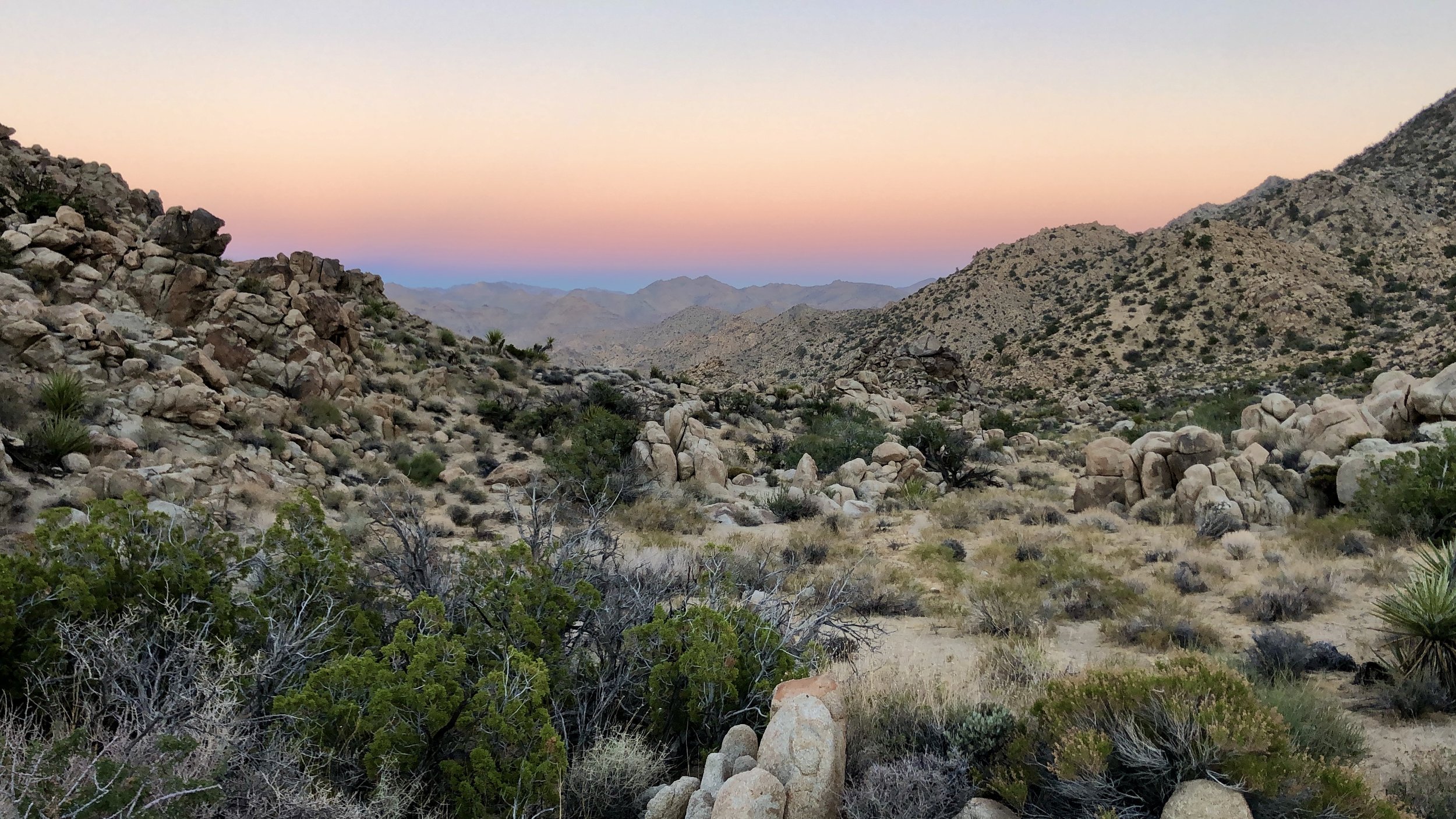



If you live in, visit, or care about the Mojave Desert, you’re probably quite familiar with the ungainly silhouette of its most iconic resident: the Joshua tree. Yucca brevifolia and its related species Yucca jaegeriana are endemic to the Mojave Desert, meaning that they’re not found anywhere else on earth. As the manifestations of climate change multiply, even that restricted range is likely to shrink, when low-elevation and southerly populations struggle to adapt to hotter conditions.
It’s 10am and the sun already feels strong. Seventh and eighth graders pile out of vans and start applying sunscreen. They’ve driven 150 miles from Grauer School near San Diego to become citizen scientists for the day. “I see you’re all wearing the right shoes,” observes Adam Henne, outreach and volunteer coordinator at Mojave Desert Land Trust. In a safety briefing he warns the group about the cholla cactus and reminds everyone to hydrate. “One more thing you’ll need to watch out for: snakes. A good rule is never to put your hands or feet where you can’t see them.”